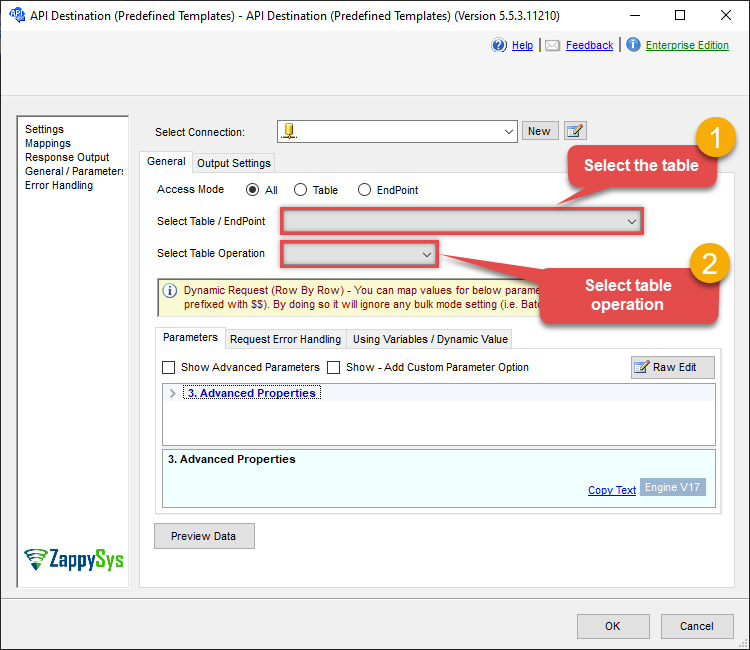Endpoint Delete a Table Row
Name
insert_table_row
Description
Insert a row into the table. [API reference]
Related Tables
Parameters
| Parameter | Required | Options |
|---|---|---|
|
Name:
Label: TableName Table name |
YES |
Output Columns
| Label | Data Type (SSIS) | Data Type (SQL) | Length | Description |
|---|---|---|---|---|
| sys_id |
DT_WSTR
|
nvarchar(64)
|
64 | |
| [$parent.Pivot_Name$] |
DT_WSTR
|
nvarchar(2000)
|
2000 |
Input Columns
| Label | Data Type (SSIS) | Data Type (SQL) | Length | Description |
|---|---|---|---|---|
| [$parent.Pivot_Name$] |
DT_WSTR
|
nvarchar(2000)
|
2000 |
Examples
SSIS
Use ServiceNow Connector in API Source or in API Destination SSIS Data Flow components to read or write data.
API Destination
This Endpoint belongs to the [Dynamic Table] table, therefore it is better to use it, instead of accessing the endpoint directly. Use this table and table-operation pair to delete a table row:
| Required Parameters | |
|---|---|
| TableName | Fill-in the parameter... |

ODBC application
Use these SQL queries in your ODBC application data source:
Create an incident
INSERT INTO incident(incident_state, severity, category, cause)
VALUES (3, 1, 'software', 'Missing a software feature.')
insert_table_row endpoint belongs to
[Dynamic Table]
table(s), and can therefore be used via those table(s).
SQL Server
Use these SQL queries in SQL Server after you create a data source in Data Gateway:
Create an incident
DECLARE @MyQuery NVARCHAR(MAX) = 'INSERT INTO incident(incident_state, severity, category, cause)
VALUES (3, 1, ''software'', ''Missing a software feature.'')';
EXEC (@MyQuery) AT [LS_TO_SERVICENOW_IN_GATEWAY];
insert_table_row endpoint belongs to
[Dynamic Table]
table(s), and can therefore be used via those table(s).
